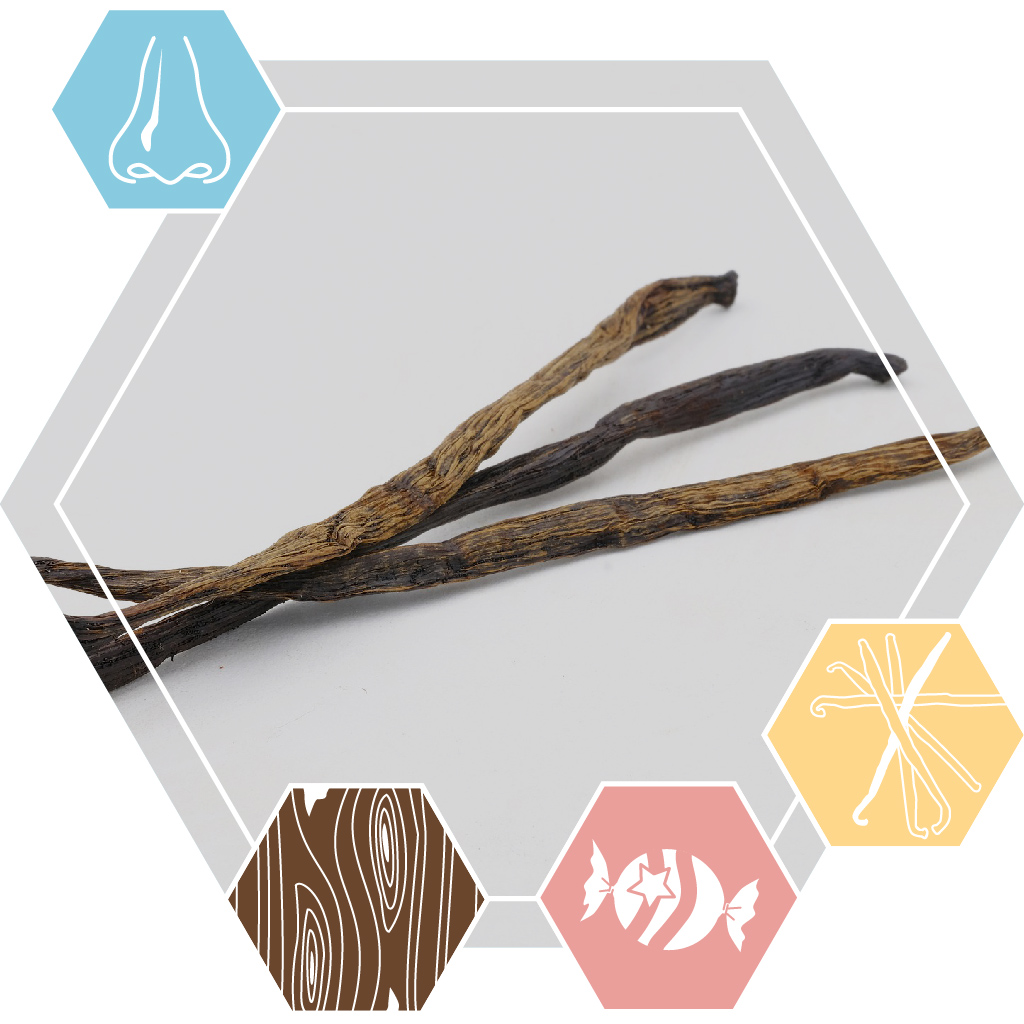Fragrance raw material
Description
Ethyl vanillin is an aromachemical for use in, for example, perfume, cosmetics and air fresheners.
Caution!
Before purchasing, please read all the information below and the general product information.
Not intended for use in food, vape liquids or other internal use.
Intended to be mixed with other fragrances: on its own, the scent can be dull or even unpleasant.
Do not use undiluted on the skin: it is a raw material, not a finished product.
Use
Ethyl vanillin has a sweet vanilla scent. The scent is quite strong and ethyl vanillin is a solid, so making a dilution is practical. With DPG and alcohol 96% a 25% solution is quite feasible, in IPM it dissolves much less well. Typical use is in vanilla accords and ambers. You usually use between 0,1% and 10% of this substance in the fragrance composition. It combines well with flowers, but also with wood and many fruits. It adds a spicy warmth to the fragrance. In perfumes it is mainly a base note. Fairly stable in terms of scent in many products, but there is a high risk of discolouration. Yet it is still used in soap because it discolours much less easily than vanillin. Compared to vanillin, it is about five times as sweet and intense.
Keep cool, dry, dark and out of the reach of children.
Properties
Ethylvanillin is a white to light yellow fine crystal powder at room temperature. The substance has a fairly long shelf life. It does not occur in nature.
Technical details
Density: 1,31
Logp: 1,6
Vapor pressure: 0,03 Pa
Melting point: 65 °C
Boiling point: 285 °C
Molar mass: 166
Packaging
We pack this substance in white plastic (PP) pots with matching lids. Larger quantities in aluminium cans. For the smaller quantities, we are switching to glass jars with black plastic lids.
Sustainability
This fragrance can be made from renewable raw materials, but also from petrochemicals such as petroleum. Unfortunately, we don't know about our ethylvanillin. The degradability in the environment is reasonably fast.
Dangers
Ethylvanillin is classified as a hazardous substance with the following characteristics:
WARNING
H319 - Causes serious eye irritation.
An allergic reaction to this substance is uncommon, but cannot be ruled out.
Codes
Article number: 23013
Dutch name: Ethylvanilline
EC number: 204-464-7
CAS number EU: 121-32-4
CAS Number TSCA: 121-32-4
FEMA number: 2464
INCI: ETHYL VANILLIN




